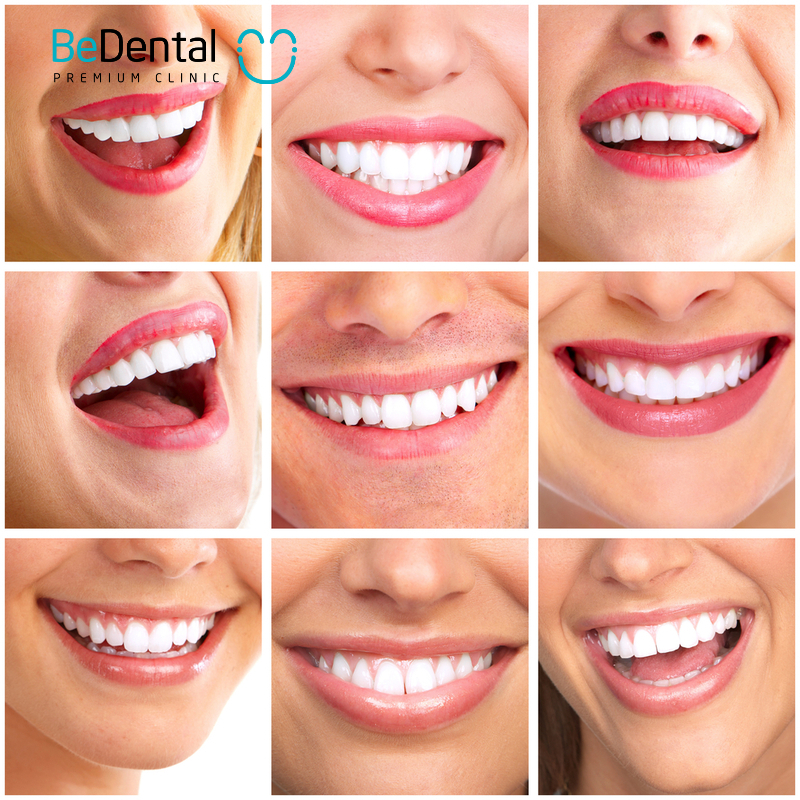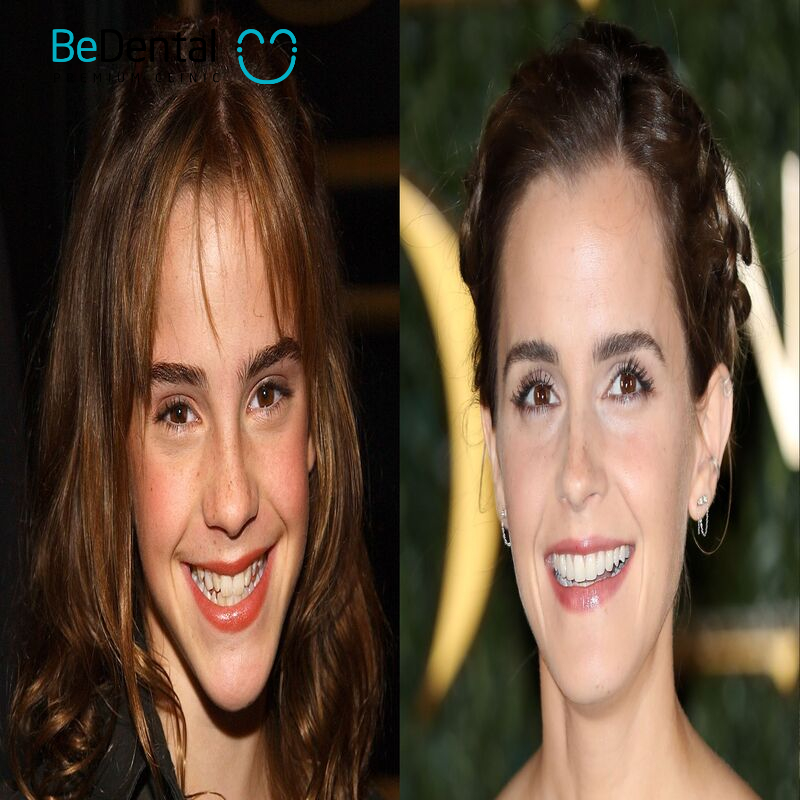Things to keep in mind when wearing a retainer – Wearing a retainer helps prevent shape deviations and keeps the teeth securely in their new position, avoiding the possibility of them being pulled back to their original position.
What are the benefits of maintaining dental retainers? Why is it necessary to wear retainers? BeDental will explain some notes when wearing a retainer in the following article.

I. Introduction to Retainers
1.1. Definition of Retainers
A retainer is a type of dental appliance used to maintain the position of teeth after the orthodontic treatment is completed. After braces are removed, without retention, teeth can potentially shift back to their original positions.
Retainers help retain the new position of the teeth after orthodontic treatment, resulting in a more beautiful and healthier smile. Typically, retainers are worn for a period of 6 months to 1 year, depending on each individual’s tooth condition.
1.2. Why is it necessary to wear retainers?
Why is it necessary to wear retainers? After completing the orthodontic treatment, teeth tend to revert to their original positions without retention. This can happen because the orthodontic wires have been removed and the soft tissues around the teeth have not had enough time to adapt and stabilize in the new position.
Without retention, teeth may shift back to their original positions, compromising the balance and aesthetics achieved through orthodontic treatment. Moreover, maintaining the new position of the teeth contributes to their overall health by minimizing crowding and wear between the teeth. Therefore, wearing retainers is crucial to ensuring the success of the orthodontic process.
II. Why do teeth still shift even with retainers?
Why do teeth still shift even with retainers? Things to keep in mind when wearing a retainer:
- After braces or orthodontic treatment, wearing retainers is necessary to maintain the correct tooth position. As we know, braces use aligner trays or attachments to move teeth to their desired positions, improving the alignment and symmetry of the upper and lower jaws.
- Once teeth have been moved to their new positions, they need time to stabilize. Therefore, after orthodontic treatment, wearing retainers regularly is important to protect the teeth and prevent them from shifting back to their original positions. However, there are cases where teeth still shift despite consistent retainer use.
- According to dental professionals, teeth shifting commonly occurs in cases where retainers are not worn consistently or there is a lack of proper care. In cases where retainers are worn but teeth still shift, the causes can be attributed to the following factors:
2.1. Ill-fitting retainers
- Retainers need to be designed to fit the structure and size of the jaw. This ensures that the retainers effectively hold the teeth in position, preventing them from shifting back and causing misalignment and crowding.
- Instability of retainers often occurs when orthodontic treatment is performed by inexperienced professionals or at unreliable dental facilities that lack necessary equipment and tools. Therefore, ill-fitting retainers that do not conform to the shape of the teeth and jaws are common.
- Large retainers can be loose and fail to provide sufficient pressure to keep the teeth in place. As a result, even with proper usage, teeth may shift back to their original positions. On the other hand, overly tight retainers can cause pain and gum damage. Excessive force from tight retainers can also lead to teeth becoming trapped or overlapping each other.
2.2. Insufficient retainer wear time
Currently, there are two types of retainers available in the market: fixed retainers and removable retainers. Among them, removable retainers are more preferred due to their convenience for eating, drinking, daily activities, and oral care. However, because they can be easily removed, many people face the issue of not wearing them for the recommended duration.

- Not ensuring effectiveness, the fixed retainer should be used for about 20-22 hours a day initially. After about 5-6 months, the teeth are completely stable, so you only need to use it for 7-9 hours per day.
- If used for the prescribed time, the teeth will stabilize quickly. Conversely, if not used for the correct amount of time, it will be difficult to avoid the condition of teeth “shifting” to different positions.
- These are the two main reasons that lead to the situation of wearing a retainer but still having teeth shifting. To diagnose the exact cause, you should visit a dentist as soon as you notice the teeth moving to different positions. Do not be careless and let the teeth become severely misaligned and crowded.
- Treatment for teeth shifting while wearing a retainer
- As soon as you notice teeth shifting after removing braces, you should visit a dentist for examination and treatment consultation. Early intervention will help correct the teeth accurately and prevent the need for re-bracing due to misalignment.
III. 3+ Things to keep in mind when wearing a retainer
Depending on the extent of teeth shifting after braces, the dentist will recommend things to keep in mind when wearing a retainer:
3.1. Remaking the retainer
- If the retainer feels loose and does not fit tightly against the teeth, it may need to be remade. This can happen when the orthodontist has limited experience in orthodontic treatment and braces. In this case, it is advisable to avoid returning to the same dental clinic for retainer adjustments.
- If necessary, it is recommended to seek treatment at a different dental facility in the area. Remaking the retainer should be done with high precision to ensure long-term stability after braces. In this case, Hawley retainers and clear aligner retainers are preferred choices due to their durability.
3.2. Wearing the retainer for the recommended duration
Things to keep in mind when wearing a retainer as follow:
- Not wearing the retainer for the recommended duration is the main reason for teeth shifting after braces. To minimize severe misalignment, it is important to wear the retainer for 20-22 hours per day.
- If you frequently forget to wear the retainer, it may be necessary to switch to a fixed retainer. A fixed retainer is bonded to the inner surface of the teeth, eliminating the risk of forgetting to use the retainer or damaging the appliance.
- Depending on the condition of the teeth, the retainer should be worn for a period of 6-12 months. For cases of early orthodontic treatment, the retainer should be worn consistently until the age of 16, as the jawbone and teeth are fully stabilized at this stage. Failure to use the retainer early on may result in teeth shifting to different positions, causing crowding and misalignment.
3.3. Repeating orthodontic treatment if necessary
- In cases of significant teeth misalignment, the dentist may recommend repeating orthodontic treatment. To ensure safety, the patient will be required to wear braces for 3-6 months and undergo adjustments to correct the misaligned teeth and bring them back to their original positions.

If delayed in treatment, the teeth will become severely misaligned and deformed, leading to the need for re-bracing for a long period of time. Therefore, it is important to visit a dentist as soon as you notice the teeth shifting back to their original positions or shifting to different places after removing braces.
IV. Some notes when wearing a retainer – Things to keep in mind when wearing a retainer
The retainer is an important tool in orthodontic treatment. Using a retainer after braces helps stabilize and be more effective for the teeth. However, during the usage, there are many things to keep in mind when wearing a retainer:
- Wear the retainer according to the dentist’s instructions. For removable retainers, you should remove them when eating and cleaning your mouth to avoid them getting bent or damaged.
- After removing braces, the teeth are not completely stable yet. Therefore, you should avoid chewing on rough, hard, and chewy foods. Strong chewing force can weaken your teeth and make them crowded and crooked.
- In addition to oral care, it is important to clean the retainer regularly with water and a toothbrush. Do not clean it with hot water or strong cleaning agents.
- During the time of wearing the retainer, you should visit the dental clinic once a month for a dental check-up. Regular check-ups help the dentist accurately diagnose any abnormalities and provide timely treatment and solutions.
With the information in this article, it is hoped that readers can identify the causes and take measures to address the situation of wearing a retainer but experiencing teeth shifting. As soon as any abnormal signs are noticed, it is important to visit a dental clinic for timely treatment.
V. Things to keep in mind when wearing a retainer – Benefits of maintaining dental retainers
Maintaining dental retainers brings many benefits to the health and appearance of users, including many things to keep in mind when wearing a retainer:
- Helps maintain even and beautiful teeth and avoid oral health issues.
- Increases chewing ability, promotes better digestion, and reduces the risk of stomach pain.
- Improves speech ability, avoiding cases of lisping, difficulty hearing, or isolation.
- Reduces the risk of jaw collapse and maintains a beautiful facial shape.
- Increases confidence in communication and personal image.
You can refer to more information about the services of Bedental Dental Clinic.
Tư vấn chuyên môn bài viết:
BÁC SĨ VÕ HUY VI
BEDENTAL - TOP STANDARD DENTISTRY SYSTEM
In HANOI
Address 1: 7B Thi Sach St, Ngo Thi Nham, Hai Ba Trung Dist, Ha Noi. - 0934.61.9090
Address 2: No 129 Hoang Ngan, Yen Hoa, Cau Giay Dist, Ha Noi. - 0934.61.9090
In HO CHI MINH
Address 1: 53 -55 -57 Pho Duc Chinh St, Nguyen Thai Binh, Dist. 1, Ho Chi Minh. - 0766.00.8080
Working: 9am - 8pm everyday
Website: https://bedental.vn/en/





